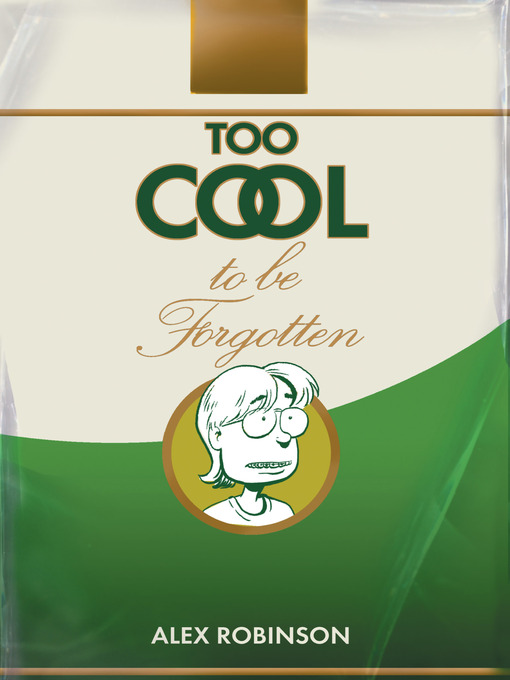
Too Cool To Be Forgotten
- اطلاعات
- نقد و بررسی
- دیدگاه کاربران
نقد و بررسی

July 28, 2008
Robinson (Box Office Poison
, Tricked
) returns with his latest, a high-concept graphic novella. In 2010, mild-mannered software engineer Andrew Wicks goes to a hypnotist to quit smoking, but wakes up from his trance to find himself in high school in 1985. While the “Peggy Sue Quits Smoking” premise could have been disastrous, with this slim volume, Robinson cements his reputation as a master cartoonist. The art is exceptional. His characters are all visually distinct, with subtle facial expressions and body language. He uses layout and even lettering to establish mood and keep the reader firmly fixed through complicated shifts in time, place and perception. Two sequences—the initial hypnosis scene and a later confrontation between two characters—are bravura performances, using innovative but still clear ways of depicting complicated inner monologues. Unfortunately, while Robinson has mastered the “graphic,” his skill with the “novel” lags behind, with some wordy dialogue and occasional narrative clunkers: one piece of foreshadowing is so clumsy it reads better as a typographical error. When Robinson the writer catches up with Robinson the artist, watch out. Even with its flaws, this is still a master class in graphic storytelling.

January 1, 2009
Gr 10 Up-Robinson is back with a concise gem that packs just as much punch as his lengthier titles. The premise here is nothing groundbreaking: Andy Wicks, a middle-aged family man, goes to a hypnosis clinic to break a 25-year smoking habit. As he mocks the ordeal as "mumbo jumbo," he is suddenly transformed into his 15-year-old self. With a 40-something mind still intact, he is forced to relive the horrors of algebra class, visits to the principal, elaborate social hierarchies, and, of course, intense sexual frustration. What makes "Too Cool" remarkable is the author's ability to revisit high school drama and reality bending in a lighthearted way yet with a depth and thoughtfulness that consistently underscore the plot. Robinson never trivializes adolescent angst. Instead, Andy's journey allows him to explore and understand the complex psychology behind his coming-of-age choices and behavior. That he has lived to see the results adds a compelling twist. Readers will gain perspective on mortality, family relationships, compassion, and love among bikini posters, gum-infested lockers, and family TV nights. As usual, Robinson's portraits perfectly underscore the intricacies of emotion in the story line, from the awkwardness of goofy permed-out and barely mustachioed teens to the anxiety of aging fathers with worry lines. Further, the artist's use of white pace, page composition, and flexible panels create a compelling sense of movement and a satisfying sense of flow. Teens are sure to have a lot of fun with the book."Shannon Peterson, Kitsap Regional Library, WA"
Copyright 2009 School Library Journal, LLC Used with permission.

June 1, 2008
Although many adultsrecall their adolescent years with a mixture of angst and nostalgia, few have any real desire to repeat them. Yet reliving his high-school days, at least those critical few when he discovered cigarettes, is the fate confronting mild-mannered Andy Wicks when a hypnotherapist propels him through an apparent time warp to cure his tobacco addiction. At first stunned to find himself back among his peers during sophomore year, Andy quickly realizes he can tweak a few key elements of his past, including spiking his hair like a punk rocker and asking gorgeous Marie Simone, whom he once had a crush on, for a date to an upcoming party. Although the party gives him the chance to refuse that first cigarette, Andy discovers a more important learning opportunity later that week when he can finally and properly say good-bye to his dying father. Robinsons skillful draftsmanship balances caricature with realism in vibrant panels that will push readers to reflect on their own youthful, neglected opportunities.(Reprinted with permission of Booklist, copyright 2008, American Library Association.)




دیدگاه کاربران